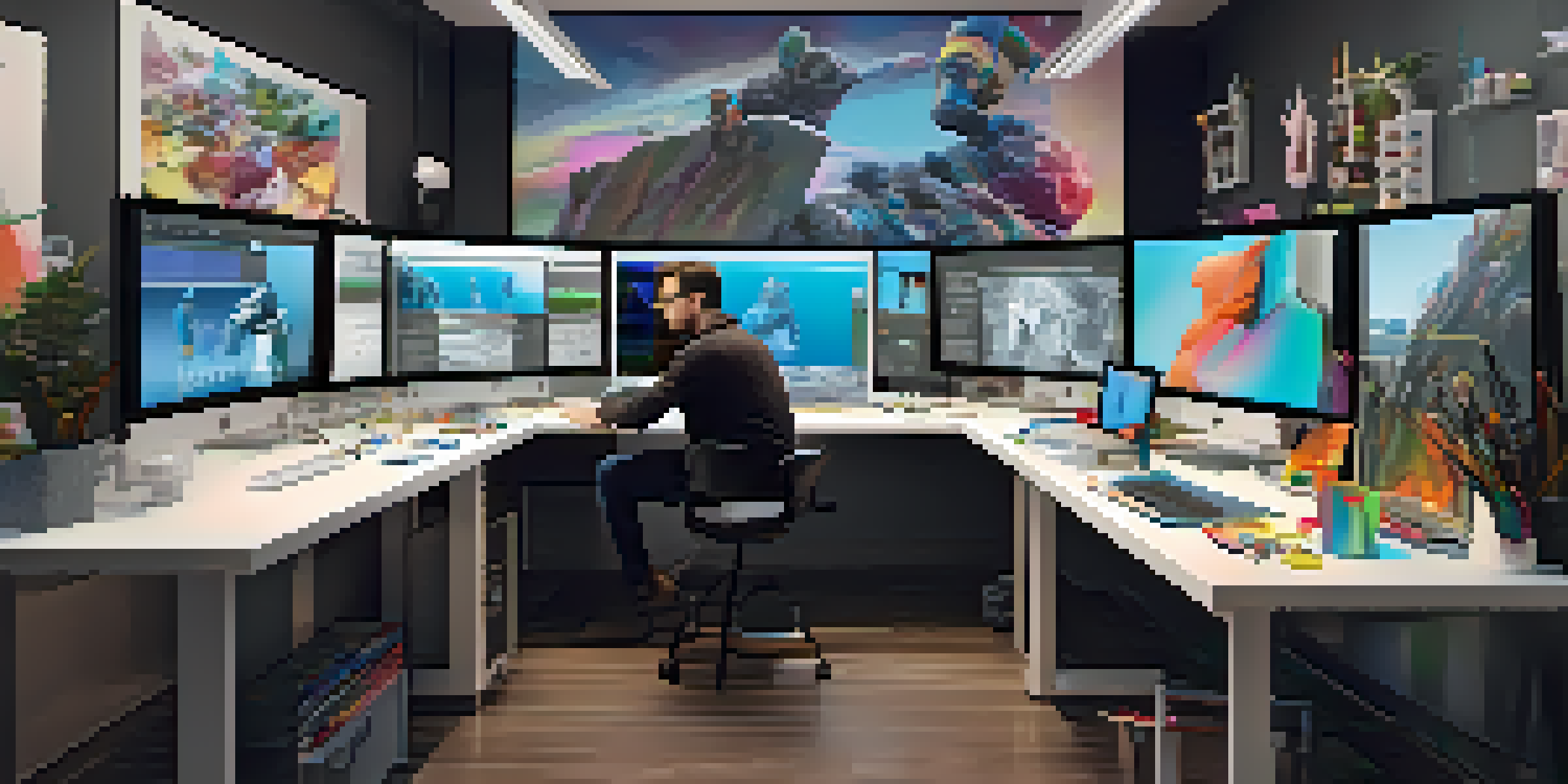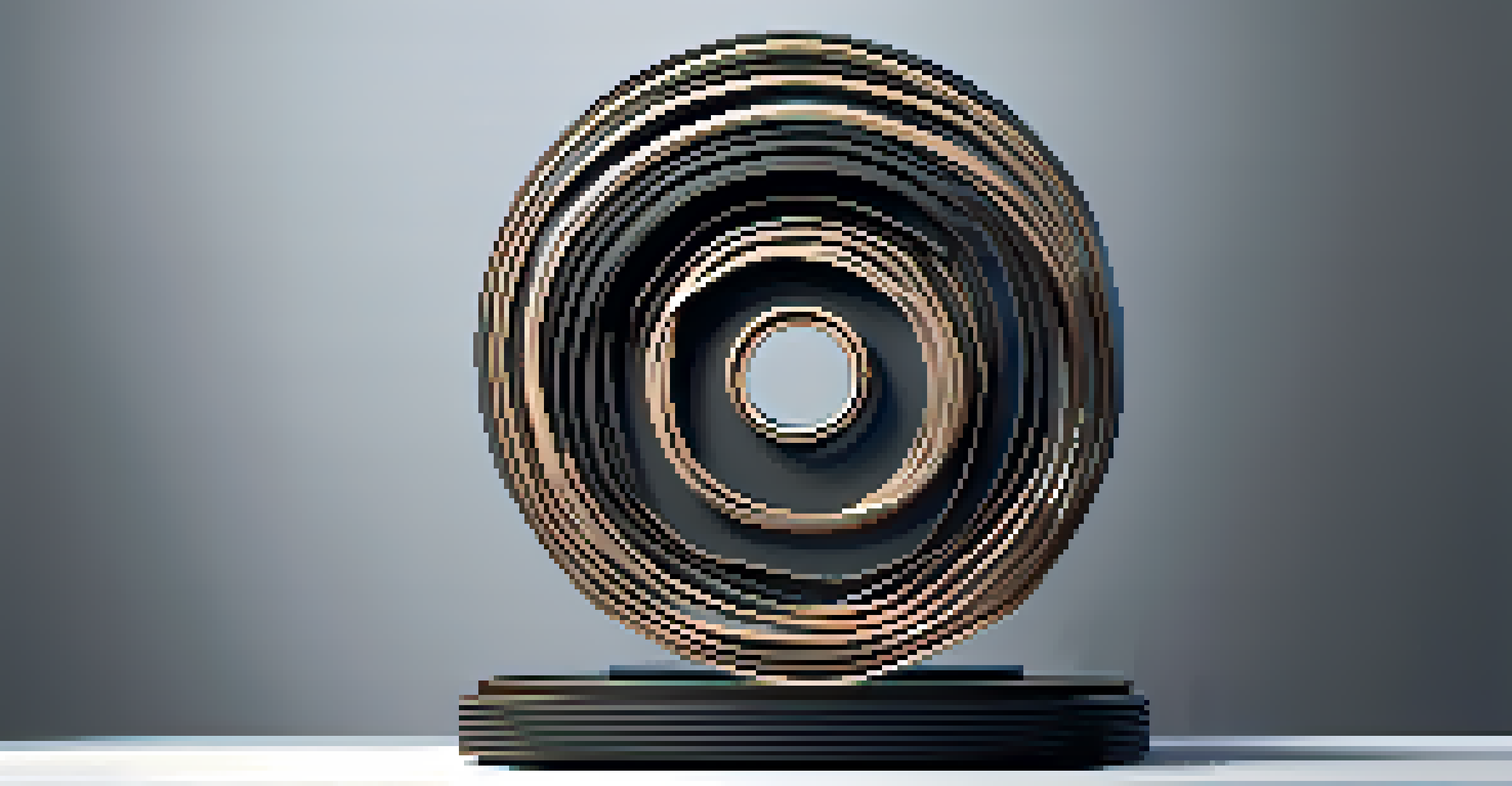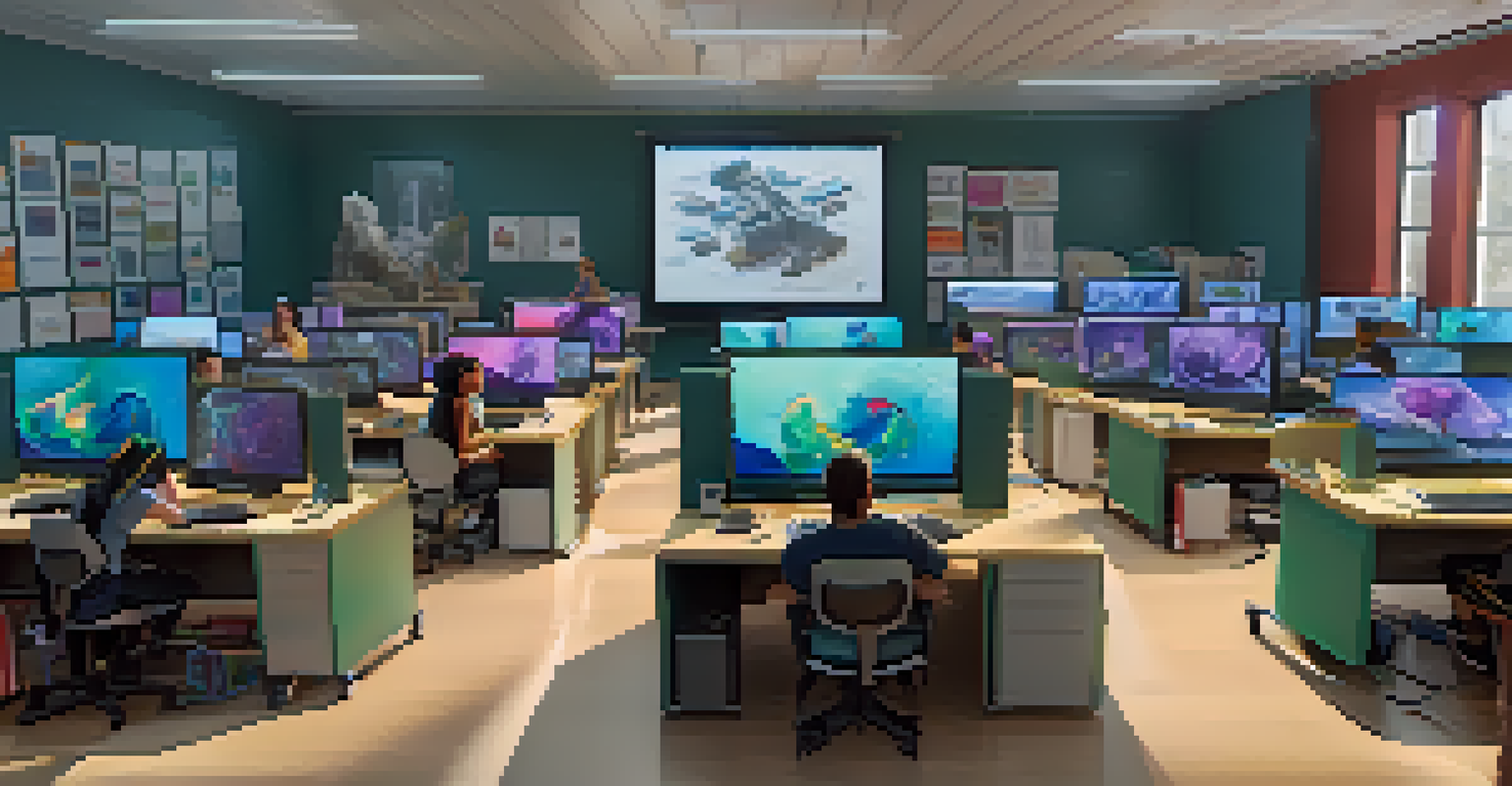Sculpting with Software: The New Age of Digital Carving

The Rise of Digital Sculpture in the Modern Era
Digital sculpture has become a game-changer in the art world, allowing artists to create intricate designs with unprecedented precision. Unlike traditional sculpting, which often requires physical materials and tools, digital carving utilizes software to mold virtual clay. This shift not only enhances creativity but also expands accessibility for artists of all backgrounds.
Art is not what you see, but what you make others see.
With the advent of powerful computers and innovative software, sculptors can now experiment without the constraints of physical materials. Artists can easily undo mistakes, try out different textures, and even manipulate lighting to see their work in various settings. This flexibility encourages more experimentation, leading to unique and groundbreaking pieces.
Moreover, digital sculpture allows for collaboration across distances. Artists can share their 3D models online, invite feedback, and even co-create with others worldwide. This interconnectedness fosters a vibrant community where ideas flow freely, enriching the artistic experience.
Popular Software Tools for Digital Sculpting
There are several software options that cater to different skill levels and artistic needs in digital sculpting. Programs like Blender and ZBrush are among the most popular, offering robust features for detailed sculpting and texturing. These tools provide a variety of brushes and modifiers, enabling artists to create everything from realistic human figures to fantastical creatures.

For beginners, user-friendly software like Tinkercad provides a simpler interface to get started with 3D modeling. This tool allows users to create designs using basic geometric shapes, making it accessible for everyone. As artists grow more comfortable, they can gradually transition to more advanced programs with richer features.
Digital Sculpture Revolutionizes Art
Digital sculpture enhances creativity and accessibility, enabling artists to experiment with precision and collaborate globally.
Another exciting option is sculptGL, a free web-based tool that lets users experiment without needing to install software. This platform is perfect for those who want to dip their toes into digital sculpting without a financial commitment. With so many options available, there’s a tool for every aspiring digital sculptor.
The Techniques Behind Digital Carving
Digital carving involves a variety of techniques that mimic traditional sculpting methods. Artists can use tools like push, pull, and smooth to manipulate their virtual clay seamlessly. These techniques allow for a tactile experience that can feel surprisingly similar to working with real materials.
Creativity takes courage.
One popular technique is voxel sculpting, where the model is made up of tiny cubes, or voxels, similar to pixels in a 2D image. This method gives artists the freedom to add or remove volume from their sculpture dynamically. Artists often find this approach liberating, as it allows for organic shapes that might be challenging to create in physical media.
Another technique is polygonal modeling, which uses a mesh of vertices and edges to create detailed shapes. This is particularly useful for creating hard surfaces or intricate designs. By combining various techniques, digital sculptors can achieve a wide range of styles and finishes, resulting in truly unique works of art.
Bridging the Gap Between Digital and Physical Art
One of the most exciting aspects of digital sculpting is its ability to bridge the gap between virtual creations and physical art. With advancements in 3D printing technologies, artists can take their digital models and transform them into tangible sculptures. This process opens up a whole new world of possibilities for exhibiting and selling artwork.
Artists can easily scale their creations and experiment with materials during the printing process. For instance, they can choose between various plastics, metals, or even biodegradable materials, allowing for sustainable art practices. This versatility means that digital sculptors can bring their visions to life in ways that were previously unimaginable.
Software Tools for Every Skill Level
Various software options cater to both beginners and advanced users, making digital sculpting more accessible to aspiring artists.
Moreover, exhibitions featuring both digital and physical sculptures are becoming increasingly popular. These events not only showcase the artists’ works but also highlight the innovative process behind digital sculpting, sparking conversations about the future of art. By blending the digital and physical realms, artists can engage audiences in new and exciting ways.
The Impact of Digital Sculpting on Art Education
As digital sculpting gains traction, art education is evolving to include these modern techniques. Many art schools now offer courses focused on digital sculpting, teaching students how to effectively use software alongside traditional methods. This integration prepares aspiring artists for a diverse range of opportunities in the contemporary art world.
Students learn not only the technical skills needed to manipulate software but also the principles of design and aesthetics that underpin all sculpture. By combining these elements, educators are fostering well-rounded artists who can adapt to various mediums. This approach encourages creativity and innovation, essential traits for success in any artistic field.
Additionally, online resources and tutorials make it easier than ever for anyone to learn digital sculpting from the comfort of their home. This democratization of knowledge allows aspiring artists to pursue their passion at their own pace, breaking down barriers that once limited access to art education. The result is a new generation of artists equipped with a diverse skill set to navigate the art world.
Challenges Faced by Digital Sculptors
Despite the advantages of digital sculpting, artists do face unique challenges in this medium. One significant hurdle is the steep learning curve associated with mastering advanced software. Many artists may find it daunting to navigate complex interfaces and features, which can be discouraging at first.
Additionally, digital sculptors often grapple with the intangible nature of their work. Unlike traditional sculpture, where the finished piece is a physical object, digital art exists primarily in a virtual realm. This can lead to feelings of disconnect or uncertainty about the value of digital creations, especially in a market that often favors physical art.
Bridging Digital and Physical Art
Advancements in 3D printing allow artists to transform digital models into tangible sculptures, expanding exhibition possibilities.
Lastly, the rapid evolution of technology means that digital sculptors must continually adapt to new tools and trends. Keeping up with software updates and learning new techniques can be time-consuming, but it’s essential for staying relevant in a competitive field. Embracing this challenge can ultimately lead to growth and innovation in an artist’s work.
The Future of Digital Sculpting: Trends to Watch
Looking ahead, the future of digital sculpting is bright, with exciting trends on the horizon. One significant development is the increasing integration of augmented reality (AR) and virtual reality (VR) technologies. These tools allow artists to immerse themselves in their creations, offering a new dimension to the sculpting process and enhancing the viewer's experience.
Another trend is the rise of artificial intelligence (AI) in art creation. AI algorithms can assist artists by generating design ideas or even automating certain aspects of the sculpting process. While this may raise questions about authorship, it also opens up new avenues for creativity and collaboration between humans and machines.

Finally, as sustainability becomes a more pressing concern, digital sculptors are likely to focus on eco-friendly practices. This could involve using biodegradable materials for 3D printing or creating virtual sculptures that minimize waste. By embracing these trends, digital sculpting will continue to evolve and inspire future generations of artists.